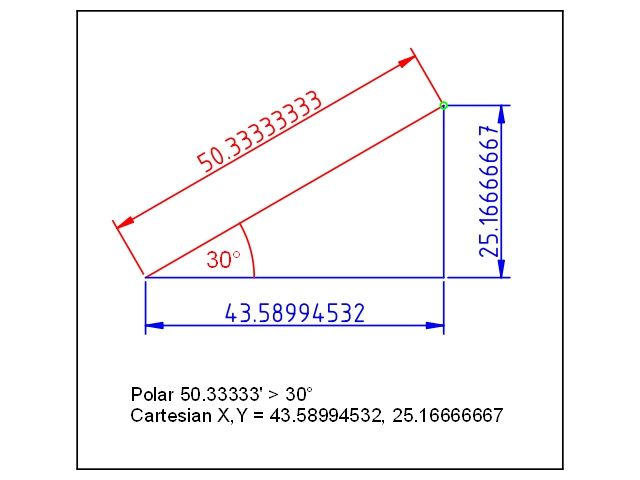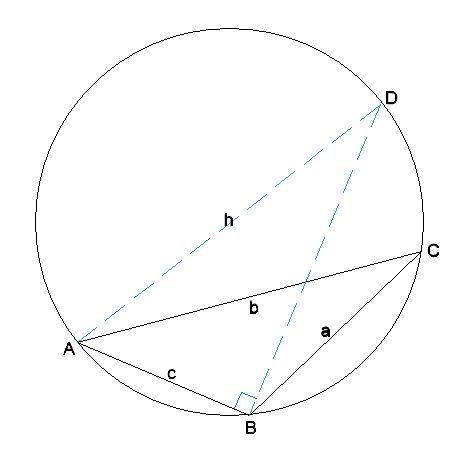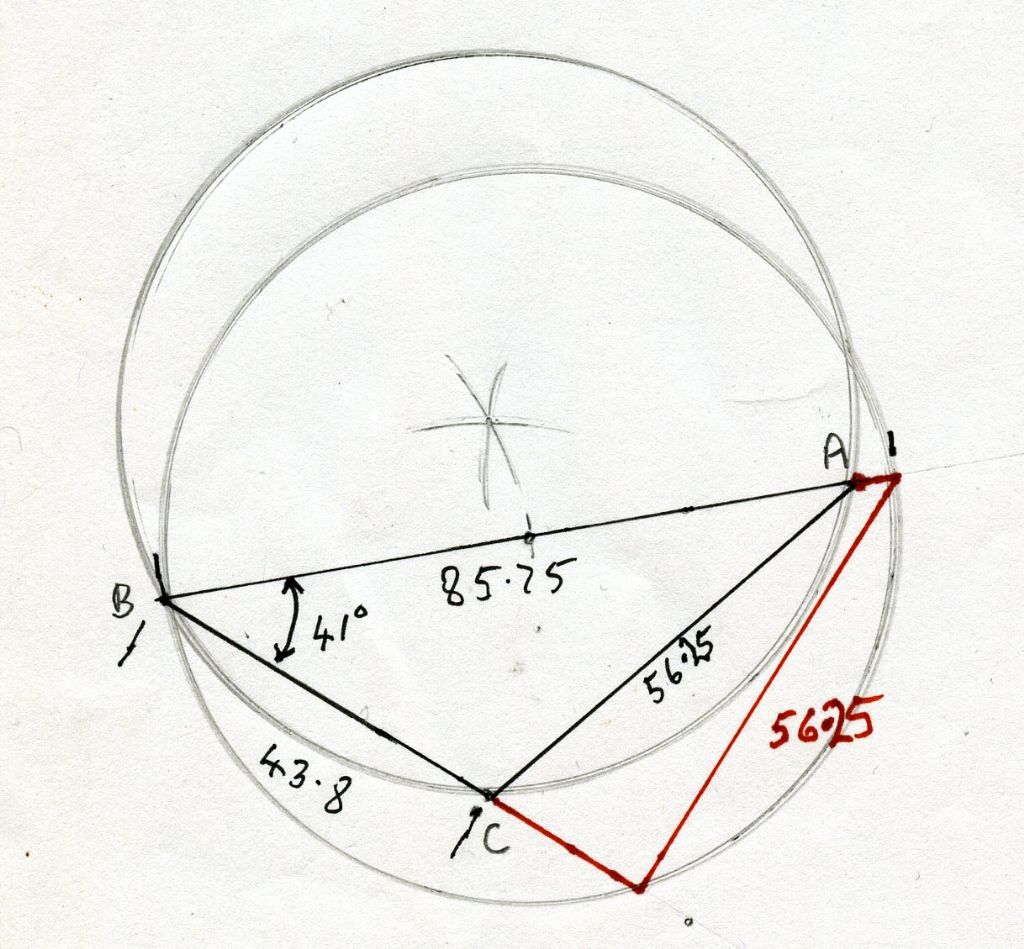Posted by Michael Gilligan on 11/10/2019 22:32:03:
I’m relieved to see that we are in agreement, Andrew 
My earlier point about accuracy comes down [in practical terms] to:
For Polar jobs, polar co-ordinates are ‘definitive’
For Rectangular jobs, rectangular co-ordinates are ‘definitive’
A classic example being the NEMA hole pattern for stepper motor flanges … devised as holes on a pitch-circle, but often specified as holes at each corner of a square [which requires expedient approximation].
MichaelG.
Oh dear, I'm going to disagree with Michael and Andrew. I believe cartesian and polar coordinates are completely interchangeable. This could end in tears!
Consider this example where the centre of the green circle is defined in both polar and cartesian terms. The Polar definition in Red, Cartesian in Blue.

Now, although 30 degrees happens to be an integer, the distance to the green circle isn't. It's 50.3333 units recurring, which as drawn by QCAD can only be expressed to 8 places of decimals. At the same accuracy, the triangle defines the X coordinate as 43.58994532 and Y as 25.16666667 There's no particular reason why the distance in a polar coordinate need be a round number. Both cartesian and polar dimensions have the same limitation.
Consider also how 30 degrees in defined. As a convenience we think of it as a segment of a circle divided into 12 equal parts. In practice, dividing a circle isn't an accurate operation, in fact the best way to do it is to calculate the tangent to as many places of decimals as needed, and then to lay out the angle over a large baseline. Dividing Y by X is the tangent of the angle, and tangents can be calculated to as many places of decimals as reqiired.
I suggest the accuracy of both coordinate systems is decided by the limitations of the calculator, human or machine, not by the nature of coordinate systems themselves. The limits can be large or small – when calculations were done manually, Four Figure Tables would limit the accuracy of tan(30) to 0.5774. Now the bog standard MS-Windows calculator makes 0.57735026918962576450914878050196 available, and – if needed – far more accuracy can be delivered by an arbitary precision package like mpmath.
Given enough number crunching Polar and Cartesian coordinates can be interchangably expressed as the other. Which one gets is used is surely a matter of convenience. Navigating a ship using Cartesian coordinates is unnatural, whilst laying out a job on a milling table with polar coordinates is clumsy.
If the number system happens to to fall nicely on round numbers for a particular position one might look better than the other, but given enough positions don't both systems fail to be spot on with equal frequency?
Dave
Chris Gunn.








